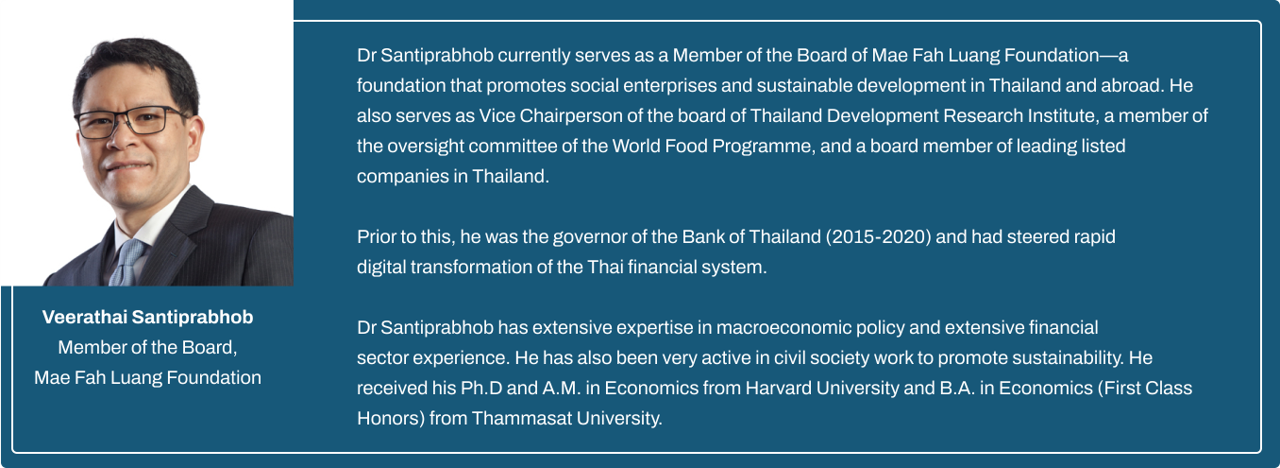Having the right leadership is always important and valuable. In moments of crisis, turmoil and chaos, it becomes particularly crucial and necessary. Our world now faces deep challenges in several areas – the rise of AI, trade wars, geopolitical tensions, income inequality and a warming planet.
Such challenges present a genuine human cost to many individuals, and could even prove an existential threat for humanity’s very sustenance. This gives a chance for leaders in different fields to steps up and display steward leadership – whether in business, government or other areas of influence.
At the same time, there are sadly too many examples of bad leadership out there. There are people who, while entrusted with positions of influence or authority, display arrogance, dishonesty, and self-centeredness. Worse still, when moments of crisis and trouble hit, they may deliberately manipulate such moments to advance an agenda for themselves at others’ expense.
Lessons from two of the most consequential leaders of the 20th century – the similarities in their path to power, and the polar opposite legacies they left - can help us understand the stark contrast between different leadership values, and how they can shape our world today.
Hitler and FDR – the history
Adolf Hitler and Franklin D. Roosevelt had a number of fascinating – some may find eerie – similarities between their journeys. Both men came to power the same year, in 1933, and died within 18 days of each other – FDR on April 12 and Hitler on April 30, in 1945. Both were thrust into power by populations reeling under the economic devastation of the Great Depression, and both displayed strong levels of charisma and oratory power when addressing their fellow citizens.
However, despite these striking similarities, both leaders ended up on an era-defining collision course against one another, and left legacies that are diametrically opposed. While Hitler came to the forefront of global fascism, plunging his nation into tyranny and eventual destruction while fuelling some of the biggest atrocities in humanity’s history, FDR led his people through overcoming the Great Depression and victory over global fascism in World War II.
When FDR gave his famous inaugural address, his most famous line was ‘the only thing we have to fear is fear itself’ – urging his listeners to not be gripped by fear amidst the crisis, and channel hope. Hitler, on the other hand did his best to leverage the ugly emotions of fear, resentment, prejudice and rage in advancing the Nazi agenda. More than anyone else, he advanced the infamous ‘stab-in-the-back myth’, the vicious and ludicrous falsehood that Jews and other nefarious groups betrayed Germany from within in their defeat in World War I.
Roosevelt’s policies were focused on offering tangible relief, restoring dignity, and widening security and inclusion through his enduring New Deal programs. As prime examples, the Civilian Conservation Corps allowed many young men to find employment by contributing toward environmental conservation projects, while Social Security offered a critical social safety net for struggling citizens.
On the other hand, Hitler’s policies were explicitly based on the premise of raising one group as supreme over everyone else. Instead of channeling resources toward helping the vulnerable and bringing people together, he viciously targeted specific groups for exclusion and focused on re-arming the nation for future aggression, all while harnessing a large-scale, tyrannical cult of personality surrounding him.
The stark contrast between both figures is most poetically exemplified by the fact that their nations came into conflict in World War II. It was not only a war between two nations or two armies, but ultimately a battle of two different governing philosophies.
Before America’s eventual entry into the war, FDR famously declared his nation to be the ‘arsenal of democracy’, while also elaborating on the ‘Four Freedoms’, pointing towards a vision of a society which could protect the basic human dignity of all while enabling them to flourish on their own terms. During this same conflict, Hitler’s regime served as the pinnacle of fascist terror. They brutally invading and occupying large swathes of Europe, while engineering some of the worst atrocities known to humankind – chief among them millions of Jews murdered in the Holocaust.
Contrasting the nature of their deaths – and the response to them – helps to powerfully underscore the contrast in their leadership legacies too. When Roosevelt died of a cerebral hemorrhage, at the start of his unprecedented fourth term, vast swathes of people genuinely and passionately mourned his passing. Leaders in America and around the world paid heartfelt tributes to him, while many citizens openly and sincerely expressed their grief in losing a leader who had dedicated everything to. On the other hand, Hitler shot himself while in an underground bunker as Berlin was going down in destruction all around him – and because of him. Barely a week after his suicide, his entire regime completely collapsed as they surrendered to the Allies.
It should be noted that FDR was not a perfect man or leader by any means. During the war, he was responsible for authorizing the internment of Japanese-Americans – a direct human rights violation of an entire racial group. On a personal level, he was not faithful to his famous wife, Eleanor, and was described by some around him as devious and dishonest on certain occasions. Nonetheless, he was able to authentically inspire and uplift the nation which he led, while representing ideals that the rest of the world could look up to as well. The same could not be said of Adolf Hitler – whose name and legacy is now synonymous with evil and terror.
Lessons for today
This contrast between these two leaders, who laid a firm stamp on the world in their unique way, does not merely serve as interesting historical examples; they can show us a roadmap of the difference between positive, uplifting leadership compared with the more ugly and destructive type. There are three insights we can draw from this contrast.
The first lesson is the contrast between leading with hope and leading with ugliness. Both methods are quite common approaches towards leadership but will leave very different outcomes. Leading with hope – with the genuine aim of helping others improve, develop and move forward, and in working towards a shared goal – is what will produce more fruit.
For example, a teacher may choose to use a positive and cheerful approach in teaching his or her students a subject, appealing to their innate sense of curiosity and love of learning rather than merely relying on disciplinary action or the threat of failing. A senior leader in a business may use persuasion over coercion when convincing those they lead of the importance of a certain project, while also encouraging them to improve their skills and knowledge through contributing to such a project. And a world leader may appeal to the promise of a brighter future for their nation, one that is more inclusive of different types of people and more prosperous for everyone to access opportunities and basic security.
On the other hand, it is also possible for a teacher to resort to harsh discipline and appeals to authority in engaging students, so that they will only do as they’re told because of a fear of punishment or failure. The business leader might similarly appeal to his or her sense of authority over his co-workers, and also use threats to get what they want from those under them. And a leader of a nation may appeal to people’s prejudices, grievances and anxieties, using that as leverage to implement oppressive and discriminatory policies. These are examples of leaders who appeal to the uglier side of human nature to achieve their intended ends.
Leading with hope may actually be a more challenging endeavor than leading with ugliness. Appealing to people’s anxieties, fears and even prejudices can serve as a quick fix, as these. On the other hand, harnessing hope and confidence in others can be a much longer process, especially during moments of difficulty and struggle.
The second lesson is the difference between having a mindset of focusing on uplifting others, and that of tearing others down. The position of leadership helps someone be in a unique position to do both, but only one will prove fruitful in leading well.
The ability, and the heart, to lift others up is an important value in good leadership, and is vital in securing enduring accomplishments. Consider a good supervisor at work, who will encourage more junior team members of their ability to develop and help unlock their potential. Or a sports coach who puts in the effort to harness more confidence from their athletes, equipping them to overcome setbacks and harnessing their determination to improve performance.
Unfortunately, it is also possible for leaders to resort to tearing others down as a leadership style. A leader in a workplace, feeling entitled and ego-driven due to their status, may feel empowered not to support those under their leadership, but put them down and asserting a sense of superiority over them. A sports coach or music instructor may continuously remind their athlete or musician of all their weaknesses and shortcomings, using it as an excuse to berate them.
It takes a weak, fragile and insecure character to resort to tearing others down as a way of advancing your leadership agenda. However, for leaders who are willing and able to put in the time and effort to uplift those they have influence over, it reflects strength of character. That in turn will enable you to gain true respect and credibility, while building success that truly lasts.
The third and final lesson is to be more focused on the broader legacy you will leave behind, rather than any short-term gains to be had. It requires sustained and sometimes strenuous effort, but it will be worth a lot in the end.
A good illustration of this principle can be found in numerous case studies featured in Sustainable Sustainability, a book by Stewardship Asia’s CEO, Rajeev Peshawaria. He lays out the enduring and inspiring legacies of various companies that have embodied the idea of ‘doing well by doing good’. Examples include the likes of Faber-Castell, a German pencil business with a consistent social conscience over more than 250 years, and the Tata Group, India’s largest conglomerate that has exemplified sustainable growth for over 150 years.
At the same time, he also laid out examples of companies that did not cover themselves in glory. One key example was Theranos, the health-tech startup founded by Elizabeth Holmes. At first, it appeared to be a highly innovative, groundbreaking company focused on blood testing, led by a passionate, vigorous and charismatic young founder. In the end, however, it was revealed to a façade, covering an ugly reality of deceit and irresponsibility, ending up with the enterprise’s collapse and Holmes facing criminal conviction and imprisonment. Companies such as Volkswagen and Boeing are other notorious examples of doing harmful things and then covering them up.
A legacy is something very precious – and something that takes a great deal of time, intentionality and effort to build up. Based on the actions we take, and more importantly, the values that drive us, it will help determine what legacy we leave behind – especially when it comes to leadership.
Posted 28/05/2025

















